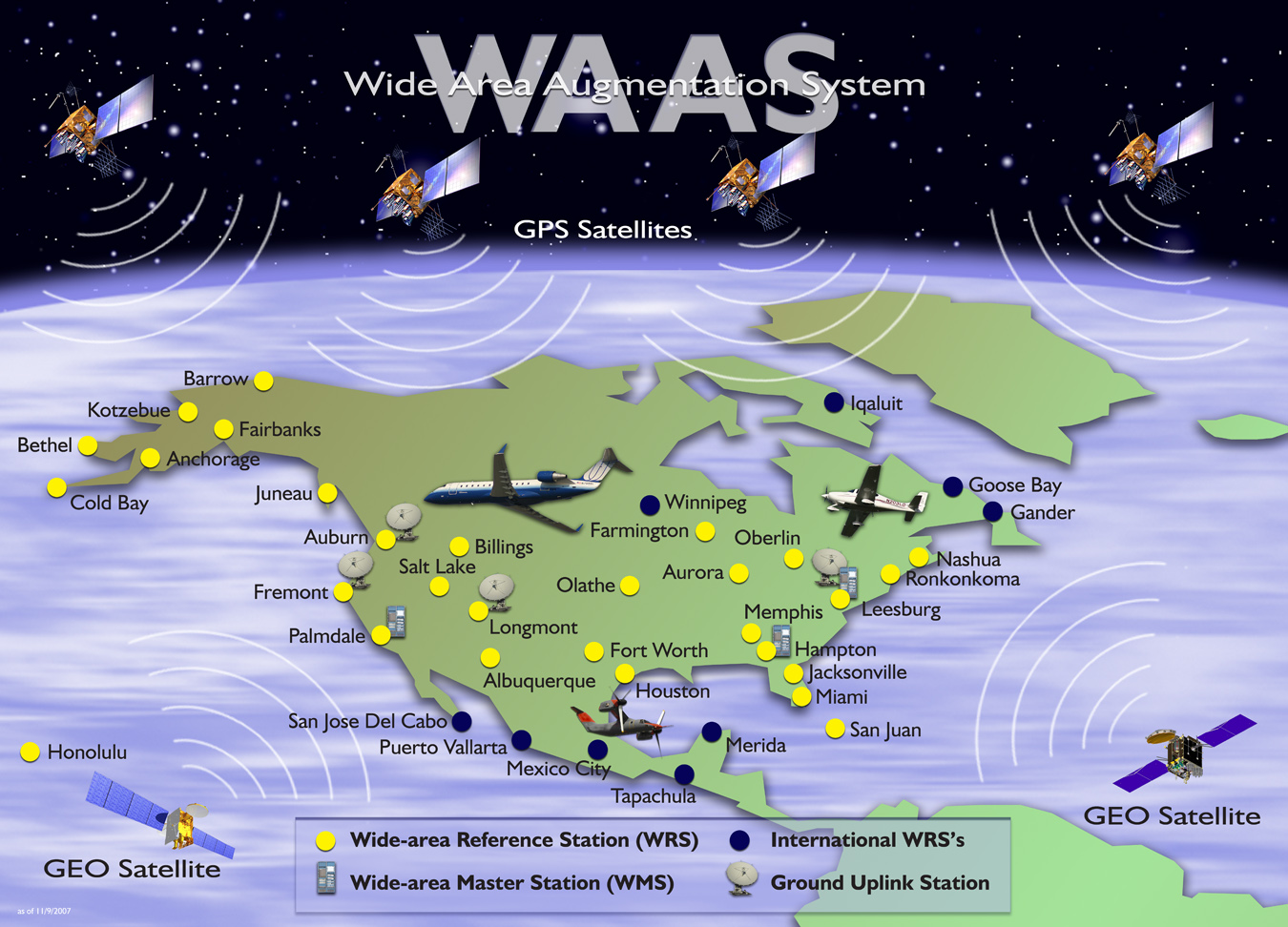What Is WAAS?
In 2007, the FAA completed and certified a significant upgrade to the GPS system. This new WAAS (Wide Area Augmentation System) uses a network of more than 25 precision ground stations to provide corrections to the GPS navigation signal. The stations are strategically positioned across North America, including Alaska, Hawaii, Puerto Rico, Canada and Mexico, to collect GPS satellite data. Using this collected error information, a message is developed to correct any signal errors. The correction messages are then broadcast through communication satellites to the airborne GPS receiver in the aircraft using the same frequency as GPS.
WAAS is designed to provide the accuracy, availability and integrity necessary to allow flight crews to rely on GPS for all phases of flight, from en route through GPS precision approach for all qualified airports within the WAAS coverage area. This provides a capability for the development of more standardized precision approaches, missed approaches, and departure guidance for approximately 4,100 runways and hundreds of heliport/helipads in the US airspace.
 At this time, there are more than twice as many WAAS/LPV (Localizer Performance with Vertical Guidance) approaches than ILS (Instrument Landing System) approaches in the US. LPV approaches are the most desirable. WAAS will also provide increased accuracy in position reporting, allowing for more uniform and high-quality worldwide air traffic management.
At this time, there are more than twice as many WAAS/LPV (Localizer Performance with Vertical Guidance) approaches than ILS (Instrument Landing System) approaches in the US. LPV approaches are the most desirable. WAAS will also provide increased accuracy in position reporting, allowing for more uniform and high-quality worldwide air traffic management.
WAAS is a critical part of the FAA’s NextGen program because the precise navigation information the onboard receivers process are being used by ADS-B and FANS-1/A solutions.
What are the advantages of WAAS?
The current advantages of WAAS are that it permits the use of more fuel efficient flight planning and approaches that have reduced minimums. WAAS-approved units also incorporate navigation procedures to take advantage of preferential flight routing such as PBR (Performance Based Routing).
What is involved in a WAAS Upgrade?
To upgrade to GPS WAAS, certified equipment appropriate to the aircraft must be installed and properly approved by the FAA or its designee.
The GPS-based flight management system will require modification or replacement. There will likely be some relatively minor wiring modifications involved. Depending on the avionics platform in the aircraft, there may be some factory modification to the display or flight control systems. The GPS antenna(s) will require replacement with an upgraded version, which may have a different footprint requiring structural modification.
November 2025
October 2025
October 2025
September 2025
August 2025